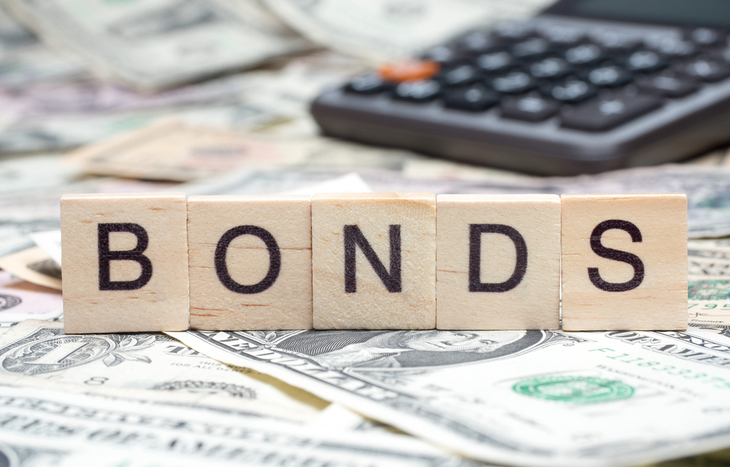Treasury Direct Bonds
What ultra-safe investment is currently paying a high interest rate? The answer is certain Treasury Direct bonds. For instance, inflation-indexed Series I bonds issued from November 2021 to April 2022 are paying 7.12 percent for the first six months. Interest is a combination of a fixed rate and an inflation rate. While the fixed rate is annual, the inflation rate may change every six months. If the inflation rate remains high, so will the yield. Compare that with the extremely low rates offered on other safe investments such as certificates of deposit and savings accounts. For that reason, the sale of Series I bonds is booming.

What are Treasury Direct Bonds?
Treasury bonds are government debt securities. Issued by the federal government, they are sold by the U.S. Treasury Department. Interest on treasury bonds is exempt from state and local taxes.
These bonds are sold on TreasuryDirect.gov which is managed by the Bureau of Fiscal Service. Because the U.S. government issues Treasury Direct bonds, they are risk-free.
Treasury bonds, issued for terms of 20 or 30 years, pay interest every six months until maturity. At maturity, bond owners receive the face value. Note that once bonds mature, they no longer pay interest. Prices and yields of treasury bonds are determined at auction.
The series EE bonds, long a college savings favorite, earn a fixed rate of interest. These bonds are guaranteed to double in 20 years. In contrast, there is no guarantee that an I bond will grow to a specified amount.
In the past, Treasury bonds were issued in paper form. Now, Treasury bonds are all issued electronically.
How to Buy Treasury Direct Bonds
Purchase Treasury Direct bonds via TreasuryDirect.gov or from banks or brokers. Before buying bonds, you must set up an account. A personal checking or savings account is necessary to pay for bonds through TreasuryDirect. Such an account is also required to accept funds upon bond redemption.
As the New York Times notes, the TreasuryDirect website needs updating. While users submit bank information when signing up, changing that bank account later requires the use of a paper form. To make the change, users must print out a form and take it to their bank or credit union for bank officer certification. It is then mailed to a U.S. Treasury post office address in Minneapolis. It generally takes about 10 business days after form receipt for an updating of the TreasuryDirect account.
While TreasuryDirect representatives say that a modernization is underway that will permit users to change bank accounts without resorting to paper forms, no timetable was given. For now, if you want to set up an account to buy Treasury Direct bonds, choose a checking or savings account you plan to keep for a long time to avoid this hassle.
Buy Treasury Direct Bonds With Your Tax Refund
Expecting a federal or state tax refund? You can have that amount directed to your TreasuryDirect account by requesting the IRS or your state tax department to deposit your refund there. Purchase savings bonds once you receive the funds.
On your tax return, simply add the TreasuryDirect routing number, 051736158, in the routing number field. In the account number field, add your TreasuryDirect account number. For “account type,” choose Savings.
Competitive vs. Non-competitive Bids
Two types of bids are used at Treasury bond auctions. With non-competitive bids, the purchaser agrees to the interest rate determined at auction. The buyer receives the bonds they want at the full amount desired. Virtually all individual investors go the non-competitive route.
With competitive bids, the buyer specifies an acceptable yield. The result is:
- Acceptance of the full amount if the bid is less than or equal to the yield determined at auction.
- Acceptance of less than the full amount if the bid is equal to the high yield.
- Rejection if the specified yield exceeds that of the yield set at auction.
You cannot use competitive bidding through TreasuryDirect.gov. Instead, bidders must use a bank or broker. The majority of competitive bidders are institutional investors.
Minimum and Maximum Purchase Amounts
The minimum amount needed for purchasing Treasury Direct bonds is just $100. Bond amounts rise in increments of $100.
The maximum noncompetitive purchase amount in a single auction is $5 million. For a competitive bid, it is 35 percent of the offering amount.
Treasury Direct Bonds Considerations
You won’t receive 1099 forms or statements from your TreasuryDirect account. You can view the 1099 online and print it. Make sure your spouse and heirs are aware of this account. If you die and don’t leave information about the account, the executor of your estate may never discover it. That’s because most executors use tax returns or financial statements for information about the decedent’s accounts, and TreasuryDirect won’t show up there.
There are a few items to keep in mind when purchasing Treasury Direct bonds. For example, while buyers don’t have to hold an I bond for 30 years, they do have to hold it for one year before redemption. Holding the bond for more than one year but less than five years triggers a three months’ interest penalty. Bonds held for more than five years are not subject to this penalty.





